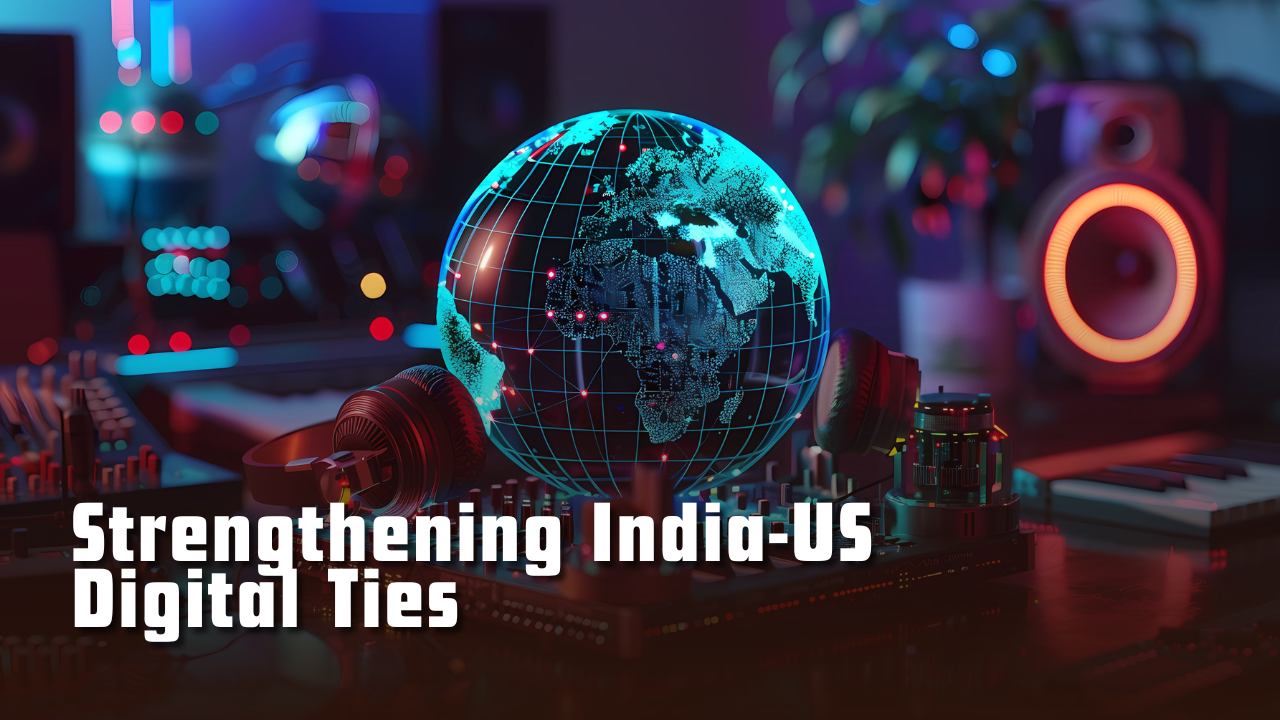Strengthening India-US Digital Ties
Strengthening the US-India subsea cable agenda
Context: The commercial partnership between India and the United States is gaining momentum across multiple strategic domains — going well beyond the contours of a soon-to-be-signed bilateral trade agreement.

More on News
- Both countries are aligning their efforts to de-risk and diversify global technology supply chains, especially in light of growing geopolitical uncertainties.
- At the heart of this cooperation is the Technology for Resilient, Open and Unified Security and Trust (TRUST) framework — an evolved successor to the U.S.-India Initiative on Critical and Emerging Technology (iCET).
- This framework is rapidly becoming a foundation for deeper digital connectivity and supply chain collaboration across the Indo-Pacific.
U.S.-India Trade Deal to Cement Digital Cooperation
- As part of this growing synergy, the first tranche of a U.S.-India trade agreement is expected to be signed ahead of the upcoming Quad Summit, to be hosted by India and attended by U.S. President Donald Trump later this year.
- This landmark deal is set to unlock new opportunities in digital technologies, cybersecurity, and next-generation infrastructure.
Subsea Cables: The Digital Lifelines of the Indo-Pacific
- Amid these developments, subsea cables — which transmit over 95% of the world’s international data — are emerging as a key focus area.
- These undersea fiber-optic cables form the physical backbone of the internet, supporting everything from cloud services to digital commerce.
- India’s role in this infrastructure is set to expand, especially as a strategic counterweight to China’s Digital Silk Road, which is rapidly building subsea networks across the Indo-Pacific.
- In response, a joint India-U.S. commitment to building secure, trusted, and resilient subsea cable systems would offer a vital global public good.
India’s Strategic Potential as a Regional Digital Hub
- India currently hosts around 17 subsea cables, with more under development.
- However, this number still trails smaller countries like Singapore, which has 26.
- Given India’s 11,098-kilometre coastline, central geographic position between Europe, Africa, and Southeast Asia, and booming digital economy, the country is ideally positioned to become a regional connectivity hub.
- Yet, over-concentration of cable landing stations remains a vulnerability.
- Today, 15 out of India’s 17 international cables land along a mere six-kilometre stretch in Mumbai.
- These landing stations — key facilities connecting undersea cables to onshore infrastructure — are clustered in just five cities: Mumbai, Chennai, Kochi, Tuticorin, and Thiruvananthapuram.
- To improve network redundancy and resilience, India must diversify landing station locations.
- Past incidents, such as the Houthi attack on subsea cables in the Red Sea (2024), underscore the dangers of over-reliance on single points.
Subsea Cables and Maritime Trade: A Historic Overlap
- India’s proximity to strategic choke points like the Strait of Hormuz, Strait of Malacca, and Bab-el-Mandeb strengthens its natural position as a digital gateway.
- With soaring bandwidth demands projected to grow by 38% between 2021 and 2028, bolstered by digital consumption and data center growth, this infrastructure is becoming ever more critical.
- In addition to servicing domestic needs, India also sits at a crucial junction for Africa-Asia and Europe-Asia subsea traffic.
- Strengthening this positioning directly contributes to countering China’s digital dominance in the region — a consistent priority in American foreign policy.
Way Forward
- India must act decisively to encourage investment in this space.
- The current licensing regime for undersea cable projects is highly complex, requiring over 50 clearances from multiple ministries.
- Streamlining these procedures is essential to attract global capital and expertise.
- Additionally, India relies heavily on foreign-flagged cable repair vessels, largely stationed in Singapore and Dubai.
- In the event of damage, it can take 3–5 months for these ships to reach Indian waters — due to distance and time-consuming permissions.
- Establishing a domestic cable repair ecosystem, including Indian-flagged ships and local depots, is an urgent commercial and strategic necessity.
Deepening cooperation on subsea cable infrastructure will be a vital pillar of the evolving India-U.S. strategic partnership. As negotiations on a broader trade deal progress, advancing digital connectivity through shared investments and policy alignment will reinforce mutual economic security, digital resilience, and strategic autonomy in the Indo-Pacific.
Subscribe to our Youtube Channel for more Valuable Content – TheStudyias
Download the App to Subscribe to our Courses – Thestudyias
The Source’s Authority and Ownership of the Article is Claimed By THE STUDY IAS BY MANIKANT SINGH



